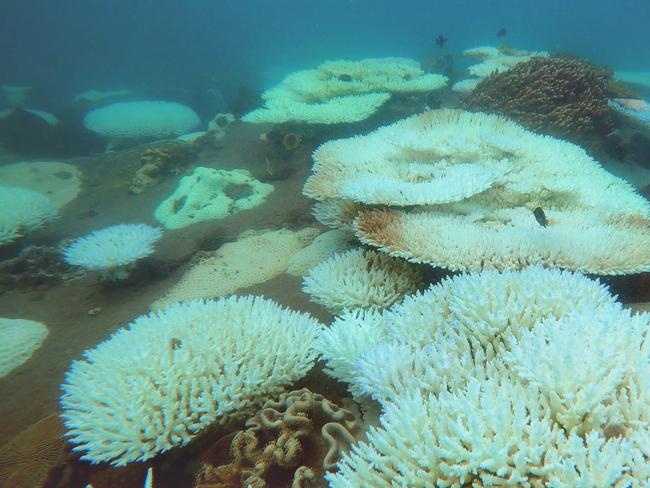New plans to protect Great Barrier Reef amid fears the world will heat up by three degrees
Experts are trying to save the Great Barrier Reef as Australia may face the effects of three degrees of global warming in the future.
A range of cutting edge technologies are being used together with indigenous waterway knowledge in a concerted bid to protect the Great Barrier Reef, amid alarming new reports it is facing a dire future.
This week the Great Barrier Reef Foundation estimated they had just 10 years to “restore and repair damaged reefs and build their resilience so they can thrive in a warmer climate”.
That warning came two days after the Australian Academy of Science (AAS) released a report which explored some stark realities of what life in Australia could be like under three degrees of global warming – a scenario they said was “increasingly likely”.
The AAS report stated “Australia’s coastal waters and oceans have broken instrumental records every year for the past 10 years” and the large scale die-off of the Great Barrier Reef was one of a number of global “tipping points” in a world undergoing rapid climatic change.
The Great Barrier Reef recorded its hottest February ever in 2020, the AAS report revealed – yet another worrying sign for the country’s most fragile and economically important ecosystem.
Responding to the AAS report, Environment Minister Sussan Ley said it “reminds us of the need to get global emissions down, and with it, Australia’s emissions”.
“The Prime Minister has been clear he would like to see emissions achieve net zero by 2050 and the technology road map is accelerating our energy response,” she said.

On the threat to the Great Barrier Reef, Ms Ley said: “We are investing millions of dollars in reef science and world leading reef adaptation strategies. Reef scientists around the world are looking at the work we are undertaking.”
A spokesperson said the Morrison Government was investing more than $1.9 billion in the Reef as part of a $2.7 billion commitment between the Australian and Queensland governments.
Among other initiatives, the government is investing in the development of more heat tolerant corals, reef grafting projects and coral shading technologies.
On Tuesday, Ms Ley announced nearly $5 million had been awarded to water-quality projects off the Queensland coast involving traditional owners, including a program to tackle the coral’s other nemesis, the crown-of-thorns starfish.
The next report on the health of the Great Barrier Reef as a whole is expected from the Australian Institute of Marine Science around the middle of the year.

Last year’s report showed some modest signs of reef recovery, although chief researcher Dr Mike Emslie said “overall, the trends are downwards”.
“That’s largely due to changes in the disturbance regime; the increasing incidence of bleaching and cyclones and the ongoing chronic Crown-of-Thorns activity,” Dr Emslie said.
While he did not wish to pre-empt the findings of this year’s report, Dr Emslie said from his own reef observations this year it appeared to be another year of recovery.
Although there was evidence of patches of coral bleaching, there had been no mass bleaching this year, he said, and no cyclones – yet.
Asked about the long-term prognosis for the Reef, Dr Emslie said it was a “very vexed question”.
“The reef will always be there – it’s just what the reef will look like,” he said.
It took anywhere from five to 25 years for some coral systems to recover after disturbances, he said, and some areas of the reef had been hit by bleaching events three times in five years. “If we get to three degrees [of global warming], all bets are off,” he said.
More Coverage
Originally published as New plans to protect Great Barrier Reef amid fears the world will heat up by three degrees





